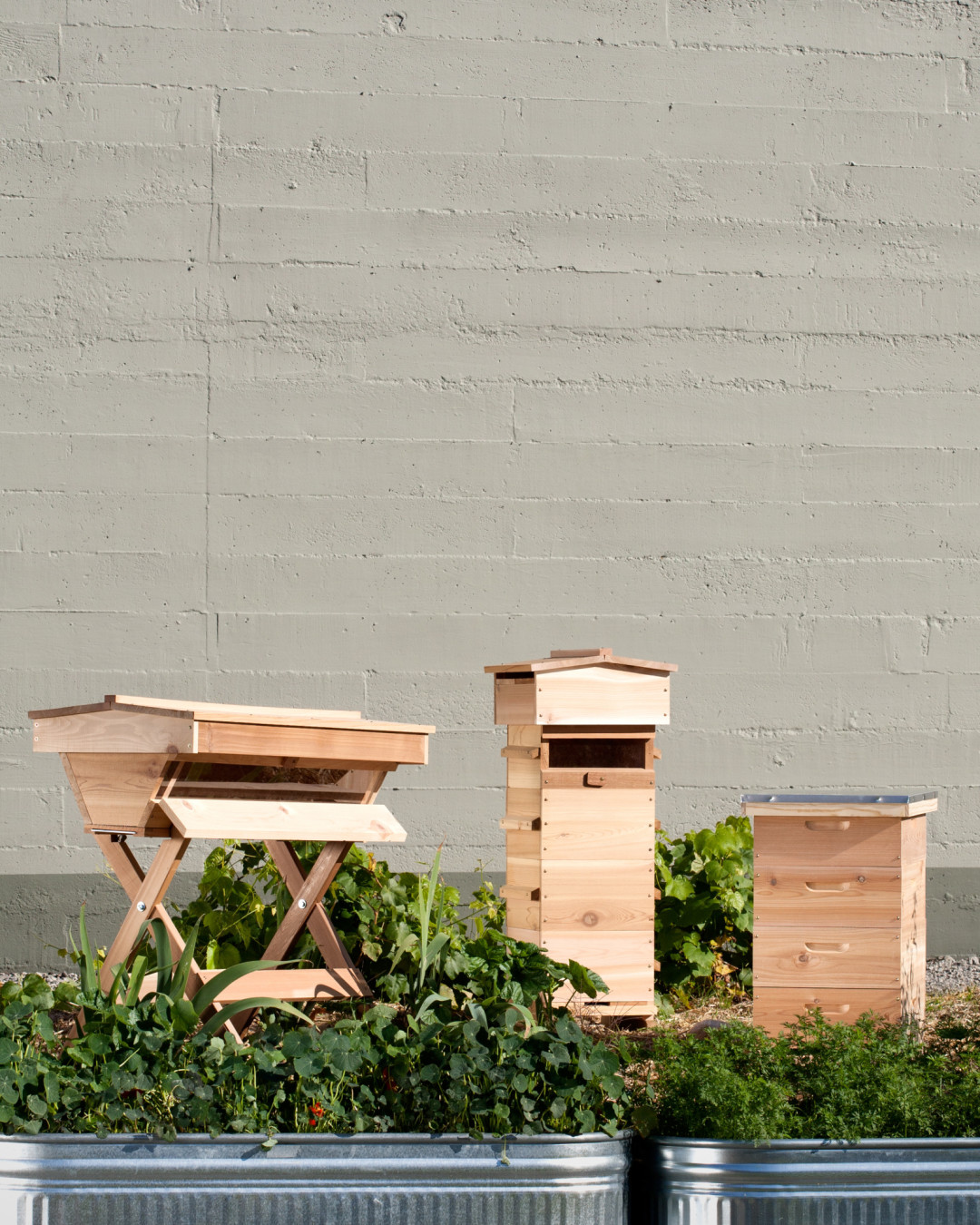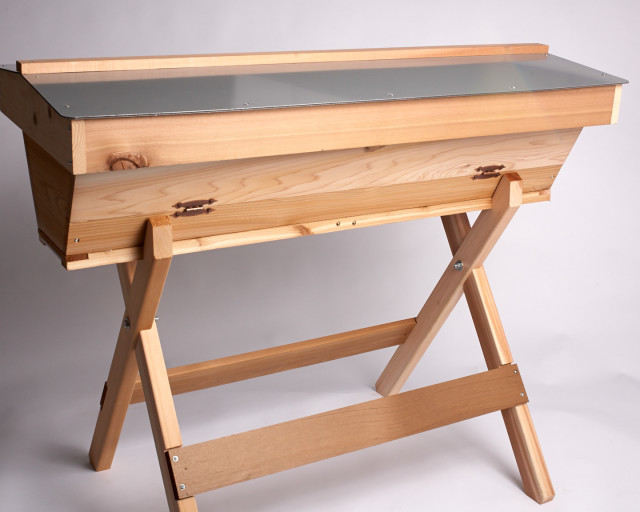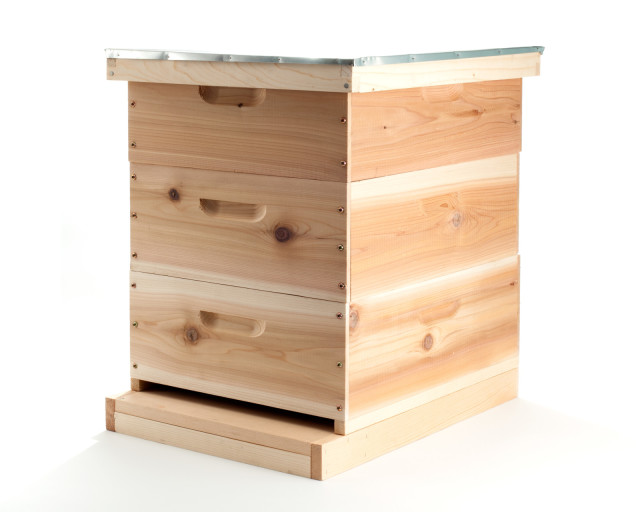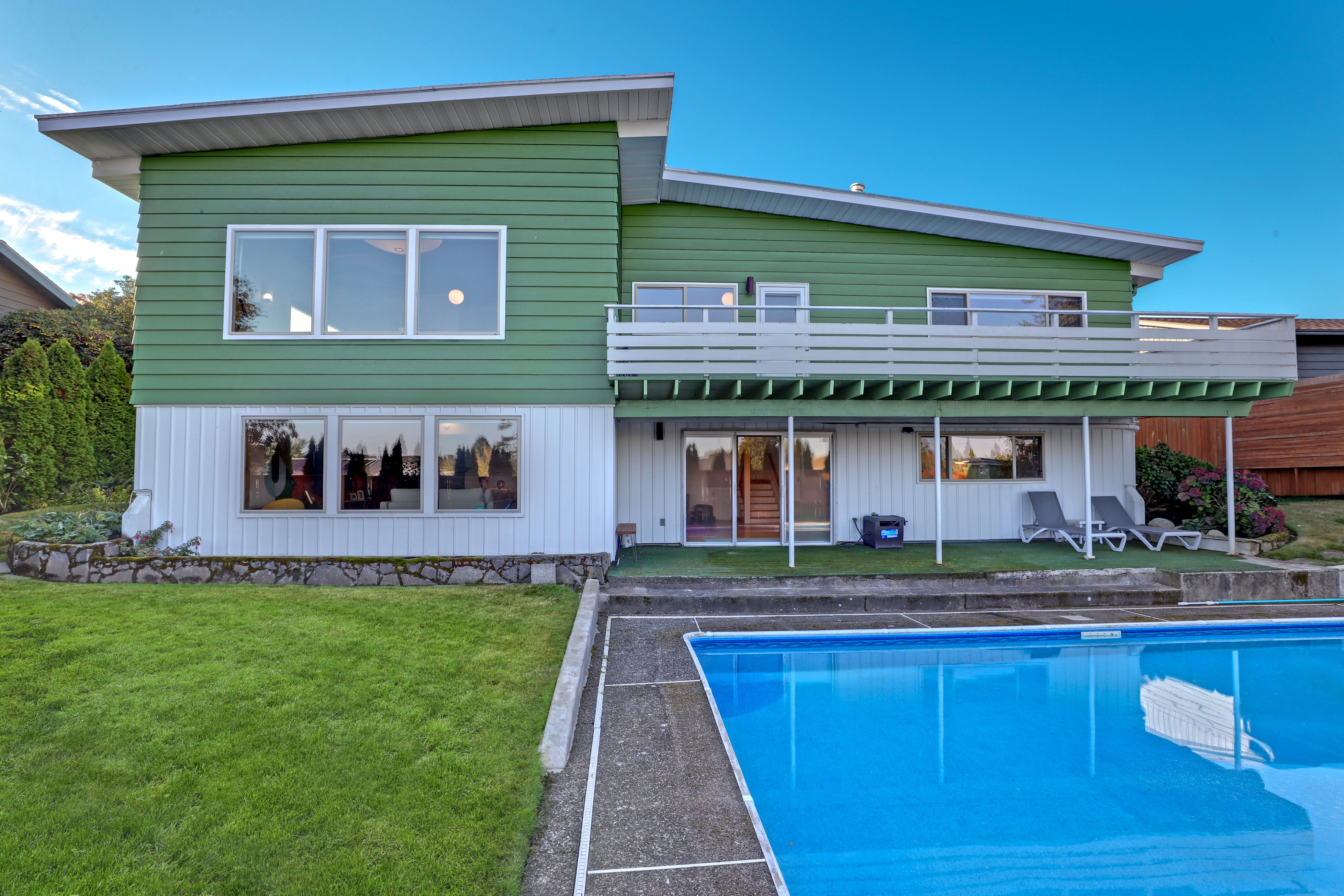Three Stunning Handmade Beehives

Bee Thinking, a little shop off SE Hawthorne, offers three stylish, sturdy bee hives (constructed from local western red cedar) and classes for everyone from the novice bee wrangler to the experienced mead-maker. Owner Matt Reed is eager to educate. His most salient piece of advice: “Be prepared for lots of opinions.” There are many ways to keep bees, but Reed suggests that no matter which hive you choose, you should keep interference with the swarm to a minimum.
His hives reflect this ethic. They omit the standard plastic honeycomb foundation and instead let the bees build their comb naturally. “With any of the hives we sell, we’re letting [the bees] build the way they want to," Reed says. "Bees will adapt to most stuff we do to them, but to me it’s kind of an affront—us humans telling them how to do this thing they’ve been doing for millions of years.”
Reed admits each of his hives has its benefits and drawbacks. Which one is best depends on an individual beekeeper’s needs.

Top Bar Hive starts at $349
Unlike traditional hives, Bee Thinkin's Top Bar hive is long instead of tall. It requires minimal heavy lifting, is easy to access, and provides the bees with horizontal wooden bars from which to build their combs. It is convenient for people with disabilities or who are unable to lift heavy objects. (Combs in traditional hives can weigh up to 80 pounds, where as Top Bar combs weigh only around seven pounds.) A window can be custom-built into the hive so you can check on your bees with minimal interference, also making it a fun style for families who want to show bees to their children. The drawback is that due to its limited depth, it will require frequent maintenance and comb removal.

Langstroth Hive starts at $183
Bee Thinking offers the stackable boxes of North America's most common hive style in a variety of depths and widths, each with eight internal wooden frames where the bees will build their comb. As the industrious critters fill the frames of each box, a new box can goes on top. Once the uppermost boxes are filled, the beekeeper can remove the surplus boxes, and extract the honey from the comb housed in the frames.

Warre Hive starts at $219
Invented by a French monk named Emile Warre, this hive style offers the most hands-off option. Warre believed bees should be allowed to build their combs as they would in nature: downwards. A hybrid between the Top Bar and the Langstroth, the Warre hive still employs top bars for natural comb construction, and boxes are added to the bottom of the hive instead of the top. This means lots of heavy lifting, but only once or twice a year. Overall this hive requires the least maintenance.
Bee Thinking offers beekeeping classes twice a month, and free mead tastings Friday-Sunday. 1551 SE Poplar Ave.




